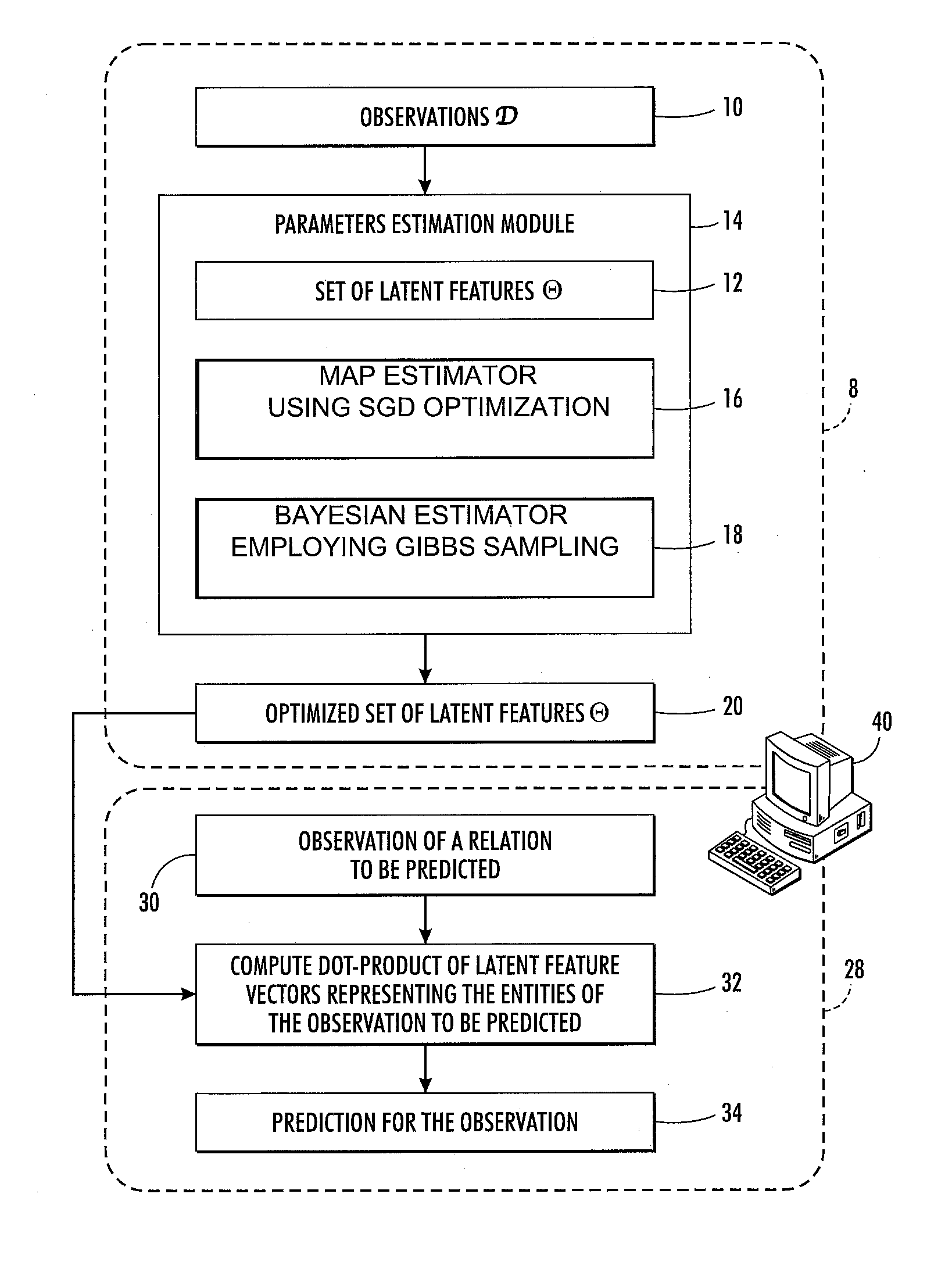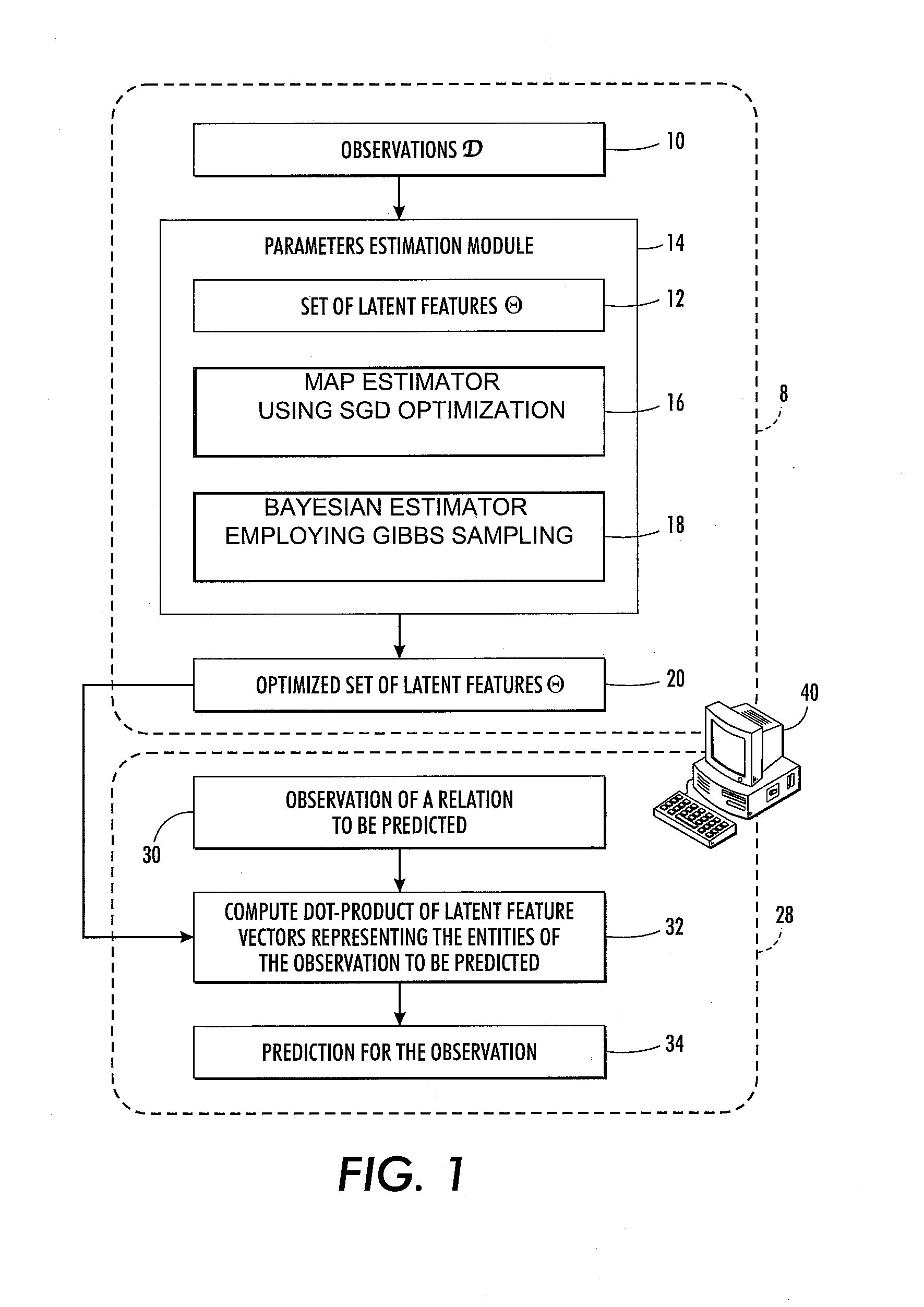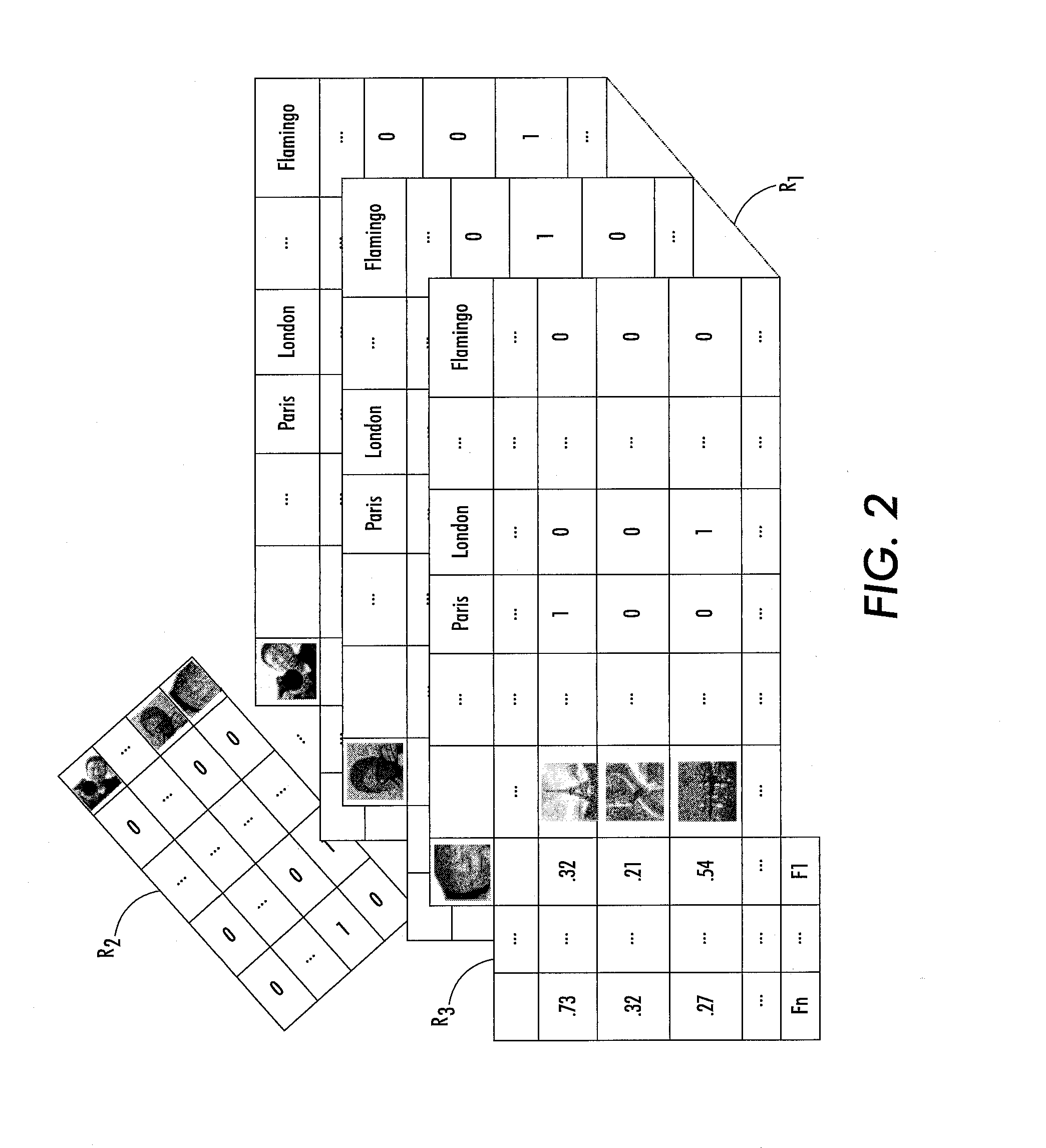Probabilistic relational data analysis
- Summary
- Abstract
- Description
- Claims
- Application Information
AI Technical Summary
Benefits of technology
Problems solved by technology
Method used
Image
Examples
Embodiment Construction
[0015]With reference to FIG. 1, disclosed herein are probabilistic relational data analysis techniques employing a generative model in which each entity is represented by a latent features vector with D elements that represent values of D latent parameters or features. The number D of latent parameters is preferably chosen to be large enough to flexibly model the entities while being small enough to provide computational efficiency. In some embodiments, D is of order 10 or of order 100, although a larger or smaller number of latent parameters is contemplated. The latent features are optimized in a training phase 8 by training the model respective to a collection of observations 10, represented herein as D. It is expected that the collection of observations 10 will be sparse, meaning that most possible relations will not be observed. (For example, any given user of an online retail store will generally not have rated most items available for sale, so most possible user-rating relatio...
PUM
 Login to View More
Login to View More Abstract
Description
Claims
Application Information
 Login to View More
Login to View More - R&D
- Intellectual Property
- Life Sciences
- Materials
- Tech Scout
- Unparalleled Data Quality
- Higher Quality Content
- 60% Fewer Hallucinations
Browse by: Latest US Patents, China's latest patents, Technical Efficacy Thesaurus, Application Domain, Technology Topic, Popular Technical Reports.
© 2025 PatSnap. All rights reserved.Legal|Privacy policy|Modern Slavery Act Transparency Statement|Sitemap|About US| Contact US: help@patsnap.com



